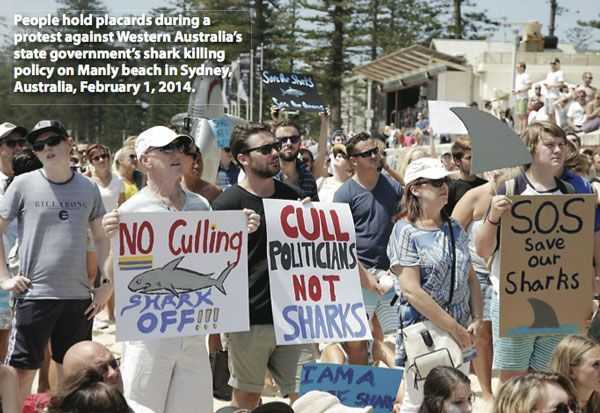You may have heard some troubling news circulating around in the last several weeks that Western Australia is currently killing and removing (culling) sharks from coastal communities in an effort to ‘safen’ their waters for bathers. As stupid and ridiculous as it may sound, this is indeed true, and I wanted to voice my scientific opinion on the matter this month.
First off – why the cull? The primary driver for this controversial and archaic action was indeed a series of tragic fatalities that resulted from great white sharks biting bathers, surfers, and recreational water users off Western Australia in the last few years. Although the total number of deaths was less than 10 (sharks kill about 7-10 people a year globally, we kill 70-100 million, just FYI), the government decided the risk of shark attack was a real problem and was threatening the local and regional economy. The result? The premier officer of Western Australia ordered a new shark cull.
Culls have been discussed for years in Western Australia, as it is indeed a hot-spot for large predatory shark activity. However, many of the previous orders for culls were stopped due to public opposition or limited political will. This time the story was different – and although the public outcry has been tremendous and hundreds of thousands of locals have spoken out against these methods – the cull began in late January 2014. The methods were to hire local commercial fishermen and kill any bull, white, and tiger sharks that were over 10 feet. To date (as of late February 2014, it is reported that over 10 sharks have been killed, but not a single white shark has been caught yet (all sharks that have been culled were tigers).
From a scientific perspective, culling large sharks is a bad idea. It is the large predators which keep populations healthy and keep the oceans in balance. But even more importantly – culls do not solve the core issue of risk to people. The scientific evidence overwhelmingly shows that shark culls do not decrease people’s chances of shark attacks. Ironically, the most likely outcome is that using bait to catch sharks for culling will actually bring more sharks closer to shore. Shark attacks and bites are tragic events, and the loss of life (even if it is a rare event) is a serious issue. However, we must remember that we are entering the territory of other predators and species such as sharks when we go swimming in the ocean. This is a risk millions of people take every day, and this is how we need to frame these human and wildlife conflicts.
It is my sincere hope that as watermen and fishers we educate others to the ecological dangers and sheer ineffectiveness of shark culls. It would be an absolute shame if people one day started asking for similar actions to prevent shark attacks in the United States. While the only way to 100% solve the risk of shark attack is to not enter the water, there are many alternative measures that can reduce the risk while not harming these already- threatened animals such as aerial patrols, closing of beaches, and using spotters on beaches to inform people when sharks are present. Culls are bad news for people and sharks, and this method of trying to ‘control’ nature for our benefit belongs in the Middle Ages.
